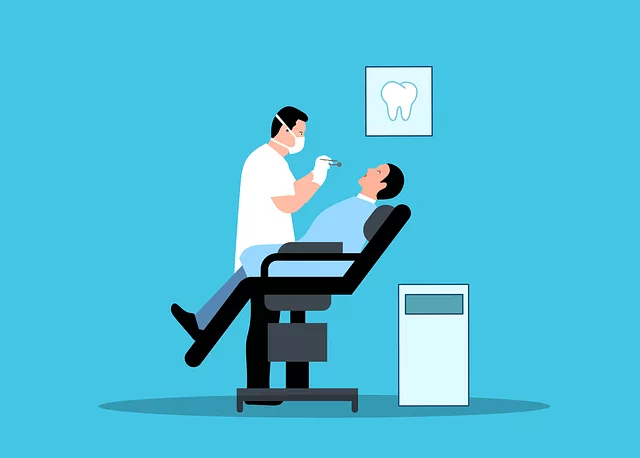Comprehensive health insurance offers a wide range of medical services, easing financial burdens and enhancing well-being. Affordable plans provide access to diverse care, including preventive, routine, and specialized services, benefiting individuals with pre-existing conditions. Key considerations involve understanding indemnity vs managed care, assessing personal healthcare needs, comparing insurers, and choosing options tailored to budgets and specific requirements, such as HDHPs, CHIPs, or state marketplaces. Effective comparison balances coverage needs with cost management strategies through quotes from various providers, ensuring quality, affordable comprehensive health insurance is accessible via government programs, online marketplaces, and employer-sponsored plans.
“Unraveling the complexities of comprehensive health insurance can be daunting, but understanding your options is crucial for securing your well-being and financial stability. This article serves as a comprehensive guide to navigating the world of affordable healthcare plans. We delve into the benefits of accessible care, dissect different coverage types, and provide practical tips for selecting the ideal plan. From exploring high-deductible options to discovering resources for discounted rates, this guide empowers individuals and families to make informed decisions regarding their comprehensive health insurance needs.”
Understanding Comprehensive Health Insurance: What It Covers

Comprehensive health insurance is a type of coverage that aims to provide all-encompassing protection for individuals and families, ensuring access to a wide range of medical services. Unlike basic plans that focus on essential treatments, comprehensive insurance goes above and beyond by covering preventive care, routine check-ups, hospital stays, prescription medications, mental health services, and even alternative or specialized treatments. This holistic approach to wellness allows policyholders to receive continuous care without financial burdens.
When considering a comprehensive health plan, understanding the coverage scope is vital. Most policies include in-patient and out-patient services, emergency care, maternity and newborn care, pediatric services, dental care, vision care, and prescription drug coverage. Some plans may also offer additional benefits like wellness programs, mental health counseling, or alternative medicine options. By reviewing the policy’s terms and conditions, individuals can ensure they are prepared for various healthcare needs and make informed decisions regarding their well-being.
Benefits of Affordable Healthcare Plans for Individuals and Families

Affordable healthcare plans offer a multitude of benefits for both individuals and families, enhancing their overall well-being and financial stability. By securing comprehensive health insurance, individuals can gain access to a wide range of medical services without incurring excessive costs. This includes routine check-ups, preventive care, emergency treatments, and specialized services, ensuring that any health concerns are addressed promptly and effectively.
For families, these plans provide a safety net, enabling them to focus on their well-being rather than financial strain. They offer peace of mind, knowing that they can access quality healthcare without breaking the bank. This is especially crucial for those with pre-existing conditions or chronic illnesses, as comprehensive health insurance ensures continuous treatment and management, improving long-term health outcomes.
Navigating Different Types of Coverage: Indemnity vs Managed Care

When exploring comprehensive health plans, understanding the difference between indemnity and managed care is crucial. Indemnity plans, often associated with traditional insurance, allow individuals to choose any healthcare provider within their network and then submit claims for reimbursement. This gives policyholders flexibility in their healthcare choices but can result in higher out-of-pocket expenses. On the other hand, managed care involves a structured system where members access healthcare services through a designated network of providers, often with lower premiums and reduced costs. Managed care plans like HMO (Health Maintenance Organization) and PPO (Preferred Provider Organization) offer various levels of coverage and networks to suit different needs and budgets.
For affordable comprehensive health insurance, managed care options are frequently more attractive due to their cost-saving mechanisms. However, it’s essential to weigh the trade-off between lower premiums and limited provider choices. Indemnity plans provide broader freedom but may not be as economical in the long run. Therefore, individuals should consider their healthcare needs, budget, and preferred level of flexibility when deciding between these two types of coverage.
How to Choose the Right Plan That Fits Your Budget and Needs

When selecting an affordable comprehensive health plan, start by evaluating your current healthcare needs and potential future requirements. Consider factors like age, overall health, family medical history, existing conditions, and any upcoming life changes that might impact your coverage needs. This assessment will help you determine the level of coverage required, ensuring you’re not paying for more than necessary while staying protected.
Next, research various insurance providers offering comprehensive health plans within your budget. Compare plan features, including in-network provider options, prescription drug coverage, preventive care benefits, and out-of-pocket expenses like deductibles and copayments. Reviewing plan details will enable you to identify the best value for your money, ensuring you have access to quality healthcare services while adhering to your financial constraints.
Exploring Popular Affordable Options: High Deductible, Catastrophic, and More

When exploring affordable comprehensive health plans, several popular options stand out. High-deductible health plans (HDHPs) are known for their lower premiums but require higher out-of-pocket expenses for medical services. This makes them suitable for folks who are generally healthy and can cover potential catastrophic costs. On the other hand, Catastrophic Health Insurance Plans (CHIPs) offer even lower premiums but with much higher deductibles—ideal for young adults or those with minimal healthcare needs.
These plans typically exclude routine care, maternity, and prescription drugs, focusing instead on covering major medical events. Additionally, many states have created their own affordable health insurance marketplaces, offering a range of plans tailored to different budgets and healthcare requirements. These options provide a balance between cost-effectiveness and comprehensive coverage, ensuring individuals can access the necessary care while staying within financial reach.
Comparing Health Insurance Costs: Factors Influencing Premium Prices

When comparing health insurance costs, it’s crucial to understand that several factors influence premium prices for comprehensive health plans. Beyond basic demographic data like age and gender, your location plays a significant role due to varying healthcare costs across regions. Additionally, pre-existing conditions, lifestyle choices, and the type of coverage you seek all impact your premiums. Higher-risk individuals or those requiring specialized care will often face higher costs.
Another key consideration is the scope and depth of the comprehensive health plan itself. Wider networks of healthcare providers generally translate to lower out-of-pocket expenses for enrollees. Additionally, plans with lower deductibles, copays, and coinsurance percentages are more expensive but offer greater financial protection during medical emergencies. Comparing quotes from various insurers allows savvy consumers to balance their need for comprehensive coverage against their desire to manage health insurance costs effectively.
Accessing Affordable Healthcare: Resources for Finding Discounted Plans

Accessing affordable healthcare is now more feasible than ever, thanks to a variety of resources and initiatives aimed at making comprehensive health insurance accessible to all. One of the key places to start is through government-sponsored programs like Medicaid or Medicare, which offer discounted plans for low-income individuals and seniors, respectively. These programs are designed to bridge the gap between the cost of care and what an individual can afford, ensuring that everyone has access to necessary medical services.
In addition to these public options, private insurers also provide affordable comprehensive health plans through various channels. Online marketplaces and comparison websites allow users to easily search for and compare different plans based on price, coverage, and provider network. This democratization of information empowers consumers to make informed decisions about their healthcare choices while keeping costs low. Additionally, many employers offer group health insurance plans that often include substantial discounts, making quality coverage more attainable for their employees.
